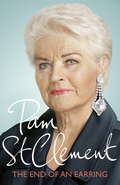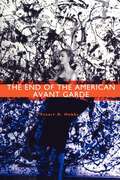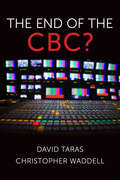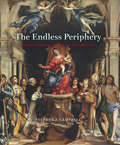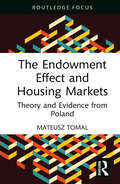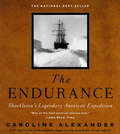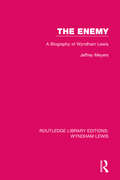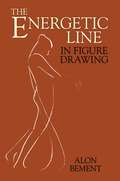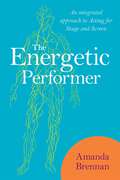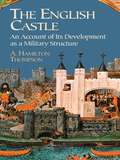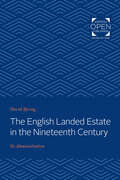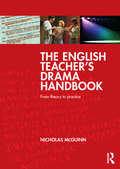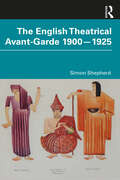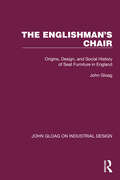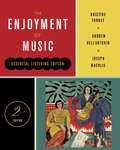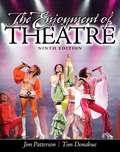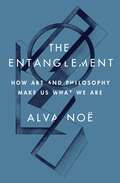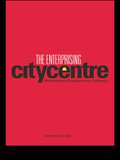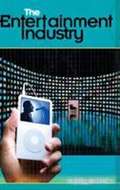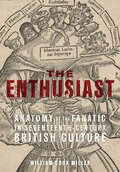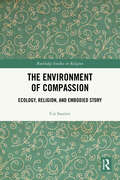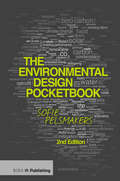- Table View
- List View
The End of an Earring
by Pam St ClementIn January 2012, one of EastEnders' longest-serving and best-loved characters breathed her last when Pat Butcher succumbed to cancer. Her departure from the show gave actress Pam St Clement time to reflect, not only on almost 26 years playing a role that she loved, but also on her whole life.Pam's mother died when she was a baby, leaving her with a father whose life didn't really have space for a child. What followed was an itinerant childhood, with various stepmothers and foster families, before an advertisement in The Lady took 11-year-old Pamela to the farm in Devon that was to become her true home, with the 'aunts' who became her surrogate parents. Time on the farm at Dartmoor, where she discovered her love of animals, alternated with life at The Warren boarding school in West Sussex, where she discovered her passion for acting.On leaving school, Pam was unsure of what direction to take but gradually realised that acting was what she wanted to do with her life. So, in 1966, Pam took up a place at drama school. Pam settled in London and worked on stage and television throughout the sixties and seventies, before her first appearance on EastEnders in 1986 and the offer of a permanent role a few months later.This memoir is far more than simply an actor's tale. Quite apart from her fascinating and unique childhood, Pam also recalls her involvement in the women's movement of the 1970s, her lifelong love of animals and the worries about her weight that have dogged her since her teenage years. It is also a tribute to Pat Butcher, for whom Pam retains a huge affection.This incredibly warm memoir reveals the woman behind the popular EastEnders' character, a woman who, apart perhaps from her earrings, couldn't be more different from Pat.
The End of the American Avant Garde: American Social Experience Series (The\american Social Experience Ser.)
by Stuart D. Hobbs"By 1966, the composer Virgil Thomson would write, "Truth is, there is no avant-garde today." How did the avant garde dissolve, and why? In this thought-provoking work, Stuart D. Hobbs traces the avant garde from its origins to its eventual appropriation by a conservative political agenda, consumer culture, and the institutional world of art.
The End of the CBC?
by David Taras Christopher WaddellThe End of the CBC? is about three overlapping crises: the crisis that has enveloped the CBC, the crisis of news, and the crisis of democracy. They are all the result to some degree of the vast changes that have overtaken and consumed the media world in the last ten to fifteen years. The emergence of platforms such as Google, Facebook, Twitter, and Netflix, the hyper-targeting of individual users through data analytics, the development of narrow online identity communities, and the rise of an attention economy that makes it more and more difficult for any but the most powerful media organizations to be noticed, have changed the media landscape in dramatic ways. The effects on the CBC and on other Canadian media organizations have been shattering. Describing the failure of successive governments to address problems faced by the public broadcaster, this book explains how the CBC lost its place in sports, drama, and entertainment. Taras and Waddell propose a way forward for the CBC – one in which the corporation concentrates its resources on news and current affairs and re-establishes a reputation for depth and quality.
The End of the Village: Planning the Urbanization of Rural China (Globalization and Community #33)
by Nick R. SmithHow China&’s expansive new era of urbanization threatens to undermine the foundations of rural life Since the beginning of the twenty-first century, China has vastly expanded its urbanization processes in an effort to reduce the inequalities between urban and rural areas. Centered on the mountainous region of Chongqing, which serves as an experimental site for the country&’s new urban development policies, The End of the Village analyzes the radical expansion of urbanization and its consequences for China&’s villagers. It reveals a fundamental rewriting of the nation&’s social contract, as villages that once organized rural life and guaranteed rural livelihoods are replaced by an increasingly urbanized landscape dominated by state institutions. Throughout this comprehensive study of China&’s &“urban–rural coordination&” policy, Nick R. Smith traces the diminishing autonomy of the country&’s rural populations and their subordination to larger urban networks and shared administrative structures. Outside Chongqing&’s urban centers, competing forces are at work in reshaping the social, political, and spatial organization of its villages. While municipal planners and policy makers seek to extend state power structures beyond the boundaries of the city, village leaders and inhabitants try to maintain control over their communities&’ uncertain futures through strategies such as collectivization, shareholding, real estate development, and migration.As China seeks to rectify the development crises of previous decades through rapid urban growth, such drastic transformations threaten to displace existing ways of life for more than 600 million residents. Offering an unprecedented look at the country&’s contentious shift in urban planning and policy, The End of the Village exposes the precarious future of rural life in China and suggests a critical reappraisal of how we think about urbanization.
The Endings: Photographic Stories of Love, Loss, Heartbreak, and Beginning Again
by Jessica Ennis Caitlin CronenbergFeaturing some of today's most beloved actors, these piercing photographic vignettes capture female characters in the throes of powerful emotional transformations. Photographer Caitlin Cronenberg and art director Jessica Ennis collected stories of heartbreak, relationship endings, and new beginnings—fictional but often inspired by real life—and set out to convey the raw emotions that are exposed in those most vulnerable of states. Collaborating with celebrated talents such as Julianne Moore, Keira Knightley, and Gugu Mbatha-Raw, Cronenberg and Ennis developed each character, built her world, and then photographed as she lived the role before the camera. The resulting collection is a bold look at the experience of losing or leaving love and will speak to anyone who appreciates art, photography, and the strength of facing emotional depths head-on.
The Endless Periphery: Toward a Geopolitics of Art in Lorenzo Lotto's Italy (Louise Smith Bross Lecture Series)
by Stephen J. CampbellWhile the masterpieces of the Italian Renaissance are usually associated with Italy’s historical seats of power, some of the era’s most characteristic works are to be found in places other than Florence, Rome, and Venice. They are the product of the diversity of regions and cultures that makes up the country. In Endless Periphery, Stephen J. Campbell examines a range of iconic works in order to unlock a rich series of local references in Renaissance art that include regional rulers, patron saints, and miracles, demonstrating, for example, that the works of Titian spoke to beholders differently in Naples, Brescia, or Milan than in his native Venice. More than a series of regional microhistories, Endless Periphery tracks the geographic mobility of Italian Renaissance art and artists, revealing a series of exchanges between artists and their patrons, as well as the power dynamics that fueled these exchanges. A counter history of one of the greatest epochs of art production, this richly illustrated book will bring new insight to our understanding of classic works of Italian art.
The Endowment Effect and Housing Markets: Theory and Evidence from Poland (Routledge Studies in International Real Estate)
by Mateusz TomalThis book aims to provide a comprehensive analysis of the so-called “endowment effect” in the housing market. In a nutshell, the phenomenon of overvaluing things we own which was first conceptualised in 1980 and has since been one of the most studied behavioural biases in economics.The first chapter presents a systematic review of the literature on the endowment effect in the housing market, together with the identification of research gaps to be filled by other researchers. The second chapter aims to propose a theoretical model explaining the strength of the endowment effect in sales and rental housing markets by primary and secondary markets. The last chapter presents the results of empirical research on the endowment effect in the Polish housing market, testing the model presented in Chapter 2. The chapters can be read together or independently by researchers, students, and policymakers interested in behavioural economics in housing and real estate. For policymakers, the book can be extremely useful as the endowment effect can create friction in the housing market because of a mismatch between the price demands of sellers and buyers, especially in countries where the level of market professionalisation is low (such as Poland). Thanks to the empirical research contained in this book, it will be possible to identify specific market segments where the endowment effect may be particularly elevated – on such segments, policymakers should introduce actions contributing to the elimination of this behavioural bias.
The Endurance: Shackleton's Legendary Antarctic Expedition
by Caroline AlexanderIn August 1914, days before the outbreak of the First World War, the renowned explorer Ernest Shackleton and a crew of twenty-seven set sail for the South Atlantic in pursuit of the last unclaimed prize in the history of exploration: the first crossing on foot of the Antarctic continent. Weaving a treacherous path through the freezing Weddell Sea, they had come within eighty-five miles of their destination when their ship, Endurance, was trapped fast in the ice pack. Soon the ship was crushed like matchwood, leaving the crew stranded on the floes. Their ordeal would last for twenty months, and they would make two near-fatal attempts to escape by open boat before their final rescue. Drawing upon previously unavailable sources, Caroline Alexander gives us a riveting account of Shackleton's expedition--one of history's greatest epics of survival. And she presents the astonishing work of Frank Hurley, the Australian photographer whose visual record of the adventure has never before been published comprehensively. Together, text and image re-create the terrible beauty of Antarctica, the awful destruction of the ship, and the crew's heroic daily struggle to stay alive, a miracle achieved largely through Shackleton's inspiring leadership. The survival of Hurley's remarkable images is scarcely less miraculous: The original glass plate negatives, from which most of the book's illustrations are superbly reproduced, were stored in hermetically sealed canisters that survived months on the ice floes, a week in an open boat on the polar seas, and several more months buried in the snows of a rocky outcrop called Elephant Island. Finally Hurley was forced to abandon his professional equipment; he captured some of the most unforgettable images of the struggle with a pocket camera and three rolls of Kodak film. Published in conjunction with the American Museum of Natural History's landmark exhibition on Shackleton's journey, The Endurance thrillingly recounts one of the last great adventures in the Heroic Age of exploration--perhaps the greatest of them all.
The Enemy: A Biography of Wyndham Lewis (Routledge Library Editions: Wyndham Lewis #1)
by Jeffrey MeyersOriginally published in 1980 and nominated for the Duff Cooper Prize, this was the first biography of Wyndham Lewis and was based on extensive archival research and interviews. It narrates Lewis’ years at Rugby and the Slade, his bohemian life on the Continent, the creation of Vorticism and publication of Blast, and his experiences at Passchendaele, as well as his many love affairs, his bitter quarrels with Bloomsbury and the Sitwells, the suppressed books of the thirties, the evolution of his political ideas, his self-imposed exile in North America and creative resurgence during his final blindness. Jeffrey Meyers also describes Lewis’ relationships with Roy Campbell, D. H. Lawrence, Katherine Mansfield, T. E Lawrence, Hemingway, Huxley, Yeats, Auden, Spender, Orwell and McLuhan. As the self-styled Enemy emerges from the shadows, he is seen as an independent and courageous artist and one of the most controversial and stimulating figures in modern English art and literature.
The Energetic Line in Figure Drawing
by Alon BementWell-crafted and class-tested, this guide to figure drawing features a unique teaching method. It focuses on learning to draw complete figures prior to the study of individual components, and it stresses action figures rather than the customary static examples favored by most drawing and anatomy texts. Employing more text than typical art instruction books, it presents thirty figure drawing lessons and fifty-six drawings and figures. Each lesson includes detailed instructions on anatomical drawing, accompanied by visual examples of strokes, boxes, and measurements. Author Alon Bement taught art instruction to future art teachers at Columbia University and later founded the prestigious Maryland Institute of Art. His students included Georgia O'Keeffe, who regarded him as a mentor and major influence. Bement's nontraditional approach offers students at all levels an excellent opportunity to build their visual acuity and technical skills.
The Energetic Performer: An Integrated Approach to Acting for Stage and Screen
by Amanda BrennanA new approach to actor training by a senior teacher, this illustrated manual shows how to use the body to produce rich, varied and truthful performances. The approach, rooted in the Michael Chekhov Technique, integrates ancient Qigong knowledge with somatic psychology and western actor training methods to identify the links between physical shape, emotion and feeling in performance. Supporting and illustrating the text, extensive practical exercises developed through actor training classes provide techniques to tune and adapt the body in preparation for creative work. This book will enhance your understanding of the actor's craft, offering the opportunity to grow and advance your pre-existing skills. Warm ups and sequences of exercises will enable you to implement and fully understand this innovative approach. All of the work can be applied to live and screen performances.
The England of Henry Taunt: Victorian Photographer: his Thames. his Oxford. his Home Counties and Travels. his Portraits. Times and Ephemera (Routledge Library Editions: The Victorian World #5)
by Bryan BrownHenry Taunt was one of the great photographers of the nineteenth and early twentieth centuries. He was a master of the camera and possessed of a profoundly creative sense of scene and composition. First published in 1973, this collection of Henry Taunt’s finest work includes artistic prints as well as images which are of importance to architectural and social historians. Sympathetically introduced and captioned by Bryan Brown, this book is a striking visual essay on the Victorian and Edwardian eras and a magnificent record of places and their past.
The English Castle: An Account of Its Development as a Military Structure
by A. Hamilton ThompsonOnce a seat of government as well as the private residence of its owners, the medieval castle was also a military base and stronghold for the surrounding geographical area. The development of these sturdy fortifications in England during the Middle Ages is carefully examined in this profusely illustrated book.From early chapters dealing with primitive earthworks and Roman stations, the text goes on to explore the construction of the English castle following the Norman Conquest, the beginnings of the stone castle and the Norman keep, bastions of the thirteenth century, military architecture, fortified towns in the later Middle Ages, and more.Students of architecture, military history, and medieval studies--as well as anyone interested in the evolution of castle construction--will find this work a fascinating and valuable reference.
The English Landed Estate in the Nineteeth Century: Its Administration
by David SpringOriginally published in 1963. The English Landed Estate in the Nineteeth Century: Its Administration deals principally with the administration of large landed estates during the years from 1830 to 1870. The book also throws new light on the work of the Inclosure Commissioners, who, as a department of the central government, supervised agricultural improvements made by landowners who borrowed from the government and from land companies. Author David Spring argues that the British government intervened in agriculture much more than is commonly thought. In describing the hierarchy of estate management, Spring relies, wherever possible, on hitherto unused family papers and estate documents. Especially important is his material on the Dukes of Bedford and on the domestic economy and financial position of the Russell Family. The chapter titled "The Landowner," based on the seventh Duke of Bedford's correspondence with his agent, is a case study of a single estate and provides insight into the workings of a great landowner's mind. The remaining chapters, dealing with lawyers, land agents, and the Inclosure Commissioners, include other individual portraits. Among these are Christopher Haedy, the Duke of Bedford's chief agent; James Loch, king of estate agents in nineteenth-century England; Henry Morton, the Earl of Durham's land agent; and William Blamire and James Caird, two of the Inclosure Commissioners.
The English Teacher's Drama Handbook: From theory to practice
by Nicholas McGuinnThe English Teacher’s Drama Handbook is a rich, thought-provoking introduction to teaching drama within the English classroom. Divided into two sections, the first part of the book explores deological influences that have shaped drama's relationship with English over the past 250 years and aims to help you locate your own practice within a theoretical and historical context. Starting with Rousseau's seminal text Emile, it considers the theories of key thinkers and practitioners and a range of complex issues including the construction of ‘childhood’, children’s play, the teacher and student relationship, the implications of linking drama and English and the impact of national curricula on drama and English teaching. The second half of the book offers a collection of comprehensive, practical schemes of work to inspire and support you and your students to realise the power of drama in bringing English language and literature vividly to life. Suitable for a range of ages and abilities, each activity makes explicit links to the key thinkers and issues explored in the first part of the book and explores a particular aspect of work in English - from grammar and spelling to poetry and play texts. Together with guidance on how to begin and progress the activities, each sequence includes ideas for exploring issues further in the English classroom. Written for English teachers at any stage of their career, The English Teacher’s Drama Handbook offers new ways of looking at drama and English that will ensure meaningful and enjoyable teaching and learning.
The English Theatrical Avant-Garde 1900-1925
by Simon ShepherdThe English Theatrical Avant-Garde, 1900–1925 unearths an extensive range of hitherto forgotten or ignored theatre practices. In doing so it reveals some of the well-known figures of the early twentieth-century English theatre in a strikingly new light. It fluently describes an intensity of innovation and experiment that together made the Edwardian theatre rather more radical, and rather more queer, than we’ve ever thought. Where the majority of writing on the early twentieth-century theatrical avant-garde is concerned with European movements and experiments, English activity of the period is often seen as parochial and conservative – mainly realism and issues-based drama. This book presents a new model of how avant-gardes might work; a model based not on masculine individualism but on communal inclusion. In describing this fascinating material, the author introduces us to many new figures and shows familiar ones in different ways: there’s Florence Farr, independent woman; Bob Trevelyan, radical pacifist and music drama pioneer; Granville Barker doing fairy plays while de-dramatising drama; Laurence Housman, socialist, homosexual, scripting St Francis; and the oddly modern J.M. Barrie. Together they made theatre practices rich in their diversity but consistent in their attempt to be new, producing a theatrical avant-garde unlike any other. This is a vital and indispensable new study for scholars and students of early twentieth-century theatre in England and beyond.
The Englishman's Chair: Origins, Design, and Social History of Seat Furniture in England
by John GloagOriginally published in 1964, The Englishman’s Chair is a history of English chairs, written as a continuous story from the 15th to the 20th Century and because of the revealing powers inherent in chair-making and design, it is also an unconventional footnote to English social history. The changes in taste, and fashion, the increase of skill, the introduction of new materials and the long battle between dignity and comfort are discussed, as is the impact that modern industrial designers have had on chair design.
The Enjoyment of Music: Essential Listening 2nd Edition
by Joseph Machlis Kristine Forney Andrew Dell'AntonioThe Enjoyment of Music: Essential Listening Edition offers instructors the flexibility to teach their course thematically or historically, and helps students acquire a lifelong interest in music. With Total Access, all the music and media resources students need are automatically included with every new copy of the text.
The Enjoyment of Theatre (Ninth Edition)
by Jim A. Patterson Tim DonohueBrings theatre to life for students by showing the relationship and relevance of the performing arts to their everyday lives The Enjoyment of Theatre's balanced coverage of performance and history provides a comprehensive and accessible introduction to theatre for both majors and nonmajors. This text establishes the aesthetic underpinnings of theatre art and then explores performance and production topics such as playwriting, acting, directing, design, and the theatre industry. The Enjoyment of Theatre also covers the full span of theatre's 2,500-year history. The authors make theatre come alive for students by showing them how theatre is relevant to their everyday lives. Learning Goals: Upon completing this book, readers will be able to: Understand today's theatre and the social impact of the theatre since its inception Explore theatre's cultural and economic context
The Entanglement: How Art and Philosophy Make Us What We Are
by Alva NoëWhy human nature is an aesthetic phenomenon—and why we need art and philosophy to understand ourselvesIn The Entanglement, philosopher Alva Noë explores the inseparability of life, art, and philosophy, arguing that we have greatly underestimated what this entangled reality means for understanding human nature.Life supplies art with its raw materials, but art, Noë argues, remakes life by giving us resources to live differently. Our lives are permeated with the aesthetic. Indeed, human nature is an aesthetic phenomenon, and art—our most direct and authentic way of engaging the aesthetic—is the truest way of understanding ourselves. All this suggests that human nature is not a natural phenomenon. Neither biology, cognitive science, nor AI can tell a complete story of us, and we can no more pin ourselves down than we can fix or settle on the meaning of an artwork. Even more, art and philosophy are the means to set ourselves free, at least to some degree, from convention, habit, technology, culture, and even biology. In making these provocative claims, Noë explores examples of entanglement—in artworks and seeing, writing and speech, and choreography and dancing—and examines a range of scientific efforts to explain the human.Challenging the notions that art is a mere cultural curiosity and that philosophy has been outmoded by science, The Entanglement offers a new way of thinking about human nature, the limits of natural science in understanding the human, and the essential role of art and philosophy in trying to know ourselves.
The Enterprising City Centre: Manchester's Development Challenge
by Gwyndaf WilliamsThe Enterprising City Centre reveals exemplars of local partnership working, the development and delivery of realistic implementation plans, and the range of instruments available to create both an improved quality to the urban environment and enhanced commercial and cultural competitiveness of our major city centres. That this was largely delivered in Manchester within a five year period of intensive development and renewal activity amply demonstrates the value of such experience for wider dissemination.
The Entertainment Industry
by Michael J. HaupertAimed at students and general readers, this text traces the historical evolution of entertainment as an economic entity in 20th-century America. The volume is organized roughly chronologically, and six representative types of entertainment are examined: vaudeville, recorded sound, movies, radio, television, and spectator sports. In the final chapter, Haupert (economics, U. of Wisconsin-LaCrosse) profiles 15 individuals who had a profound effect on the entertainment industry. Annotation ©2006 Book News, Inc. , Portland, OR (booknews. com)
The Enthusiast: Anatomy of the Fanatic in Seventeenth-Century British Culture
by William Cook MillerThe Enthusiast tells the story of a character type that was developed in early modern Britain to discredit radical prophets during an era that witnessed the dismantling of the Church of England's traditional means for punishing heresy. As William Cook Miller shows, the caricature of fanaticism here called the Enthusiast began as propaganda against religious dissenters, especially working-class upstarts, but was adopted by a range of writers as a literary vehicle for exploring profound problems of spirit, soul, and body and as a persona for the ironic expression of their own prophetic illuminations. Taking shape through the public and private writings of some of the most insightful authors of seventeenth-century Britain—Henry More, John Locke, the Third Earl of Shaftesbury, Mary Astell, and Jonathan Swift, among others—the Enthusiast appeared in various guises and literary modes. By attending to this literary being and its animators, The Enthusiast establishes the figure of the fanatic as a bridge between the Reformation and the Enlightenment, showing how an incipient secular modernity was informed by not the rejection of religion but the transformation of the prophet into something sparkling, witty, ironic, and new.
The Environment of Compassion: Ecology, Religion, and Embodied Story (Routledge Studies in Religion)
by Cia SautterThe Environment of Compassion explores questions of what it means to be in relationship to nature, if and how it is a religious experience, and how understanding humans as part of nature alters theology. The book offers a performance perspective that looks at ritual, dance, and theatre as a means of presenting discussion of sacred values in the public realm. The premise is that performance may serve as an effective means for developing human sacred values that recognize the more-than-human world, as it increases intersubjective awareness to address issues of social and environmental justice. The author investigates religion and theatre as a means of better understanding how eco-consciousness requires an aesthetic of the sacred. Rather than separate religion, culture, and nature, the book presents an aesthetic looking at the relationship between them. It considers how an embodied theatrical story might develop an inclusive community of compassion. Weaving the chapters together is an account of The Garden: A Refuge, an eco-centered play based on the biblical book of Job. Ecotheology, aesthetics, and embodiment theories are examined throughout, with scholarship and examples drawn largely from the Jewish tradition. The book is relevant to scholars of religion and theology, particularly those with an interest in the environment, as well as theatre, dance, and performance studies.
The Environmental Design Pocketbook
by Sofie PelsmakersThe Environmental Design Pocketbook 2nd ed places the information you need for sustainable, low energy building design at your fingertips. Packed with diagrams, tools and tips, it cuts through the complex mass of technical data and legislation that faces the designer, and distils all the key guidance into a single reference that is quick, easy to use and points to the facts, figures and performance data that are most important. This 2nd edition is now fully up-to-date with the latest Building Regulations Part L and F legislation (England and Wales), RIBA Plan of Work 2013, new information on the Green Deal and Zero Carbon and contains revised references and further reading sections throughout. Whether used in the classroom, office or on-site, the book guides the designer through the entire process; from the fundamentals to the building details. From future-proofing for a changing climate to rainwater harvesting, retrofit, and zero-carbon technologies - the Pocketbook has got it covered.
